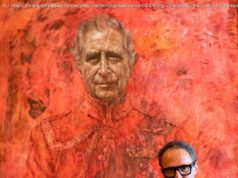With its tunnels, hairpin turns and narrow residential streets, the course in Monaco has long been a safety challenge.
The twisting streets of Monaco, home to the principality’s Formula One grand prix, are considered one of the ultimate tests for a racing driver. The track has tunnels, hairpin turns and narrow passages through residential streets.
Monaco is a race where small mistakes can lead to big problems, as the close walls make the street circuit unforgiving of errors that would go unpunished on other tracks.
The characteristics that make Monaco such a challenge for drivers also create a safety challenge. It is a Formula One cliché that if the Monaco track design had been proposed in the modern era, it would have been rejected as too dangerous.
Tall buildings line the narrow streets on which the cars race, and there is no space for the runoff areas that modern tracks use to slow cars before an impact with safety barriers or tire walls. When cars crash in Monaco, they crash hard.
Only one driver has died in Monaco as part of a Formula One grand prix. Lorenzo Bandini of Italy was killed when his overturned car caught fire following a crash in 1967. Sergio Perez of Mexico crashed while qualifying for the 2011 race. He suffered a concussion and missed the next race in Canada.
Over the years, auto racing’s international federation has made changes to the Monaco track in response to accidents. Following the Perez crash, the barrier he hit was moved back 48 feet, while bumps on the approaching road were removed.
There are also problems specific to temporary street circuits. Despite welding shut the manhole covers along the course, the amount of suction created by the passing cars often lifts the covers and sends them flying, although no spectators have been injured by one. The problem also affects the races in Singapore and Baku, Azerbaijan.
But Monaco has been home to a grand prix since 1929 and is the most iconic of all Formula One destinations. To remove it from the calendar would be unthinkable. Instead, the sport’s most famous street race has been adapted over the years to improve safety standards for drivers, fans and trackside workers.
Formula One safety has progressed rapidly since the 1970s, when more than one driver burned to death when his weight-saving magnesium chassis and monocoque, the single-piece tub containing the cockpit, caught fire in a crash. Funerals were once a regular event for Formula One, but since the 1994 death of Ayrton Senna of Brazil, only one driver, Jules Bianchi of France, has died from injuries during a grand prix weekend, crashing at the Japanese Grand Prix in 2014.
The International Automobile Federation, the sport’s governing body, has been integral to Formula One’s commitment to improving safety standards. Laurent Mekies, the federation’s director of safety, is in charge of improving safety for all of the group’s races, not only Formula One.
As the federation’s marquee championship, Formula One receives the bulk of media and sponsor attention, and as a result is the richest. Formula One’s high speeds and high budgets make the category a good testing platform for safety improvements that eventually work their way down the motorsport ladder, reducing risk at every level.
“We call it the cascade. It is something the president is pushing extremely hard on, ” Mekies said, referring to Jean Todt, the head of the federation. “Anytime we come up with something in one championship, he wants us to find a cheaper and practical equivalent in other areas of motorsport.”
“If you look at the way we do crash tests, all the crash-test procedures, capabilities, have been designed for F1, ” he said. “If you look at F2, F3 and F4, they all have slightly simpler versions than F1. But without it having happened here, it would have been impossible for them to have it.”
“Our job is to support all the organizing championships, and so we interface with each championship, and we agree with them on a road map for safety. So each championship has a road map of what is going to come in the next few years from a safety point of view. All F. I. A. departments are involved: technical, sporting and so on, ” Mekies said, referring to the federation by its French acronym.
The safety team must also impose protections for the drivers even when they oppose them. When the HANS (head and neck support) device was introduced in 2003, the federation had to make it mandatory because of driver objections. Now, no driver would hit the track without one.
There is now a debate about the open cockpit of Formula One and other federation races. The federation has been investigating ways to better protect drivers’ heads after two accidents in 2009. The Formula Two driver Henry Surtees of Britain was killed after he was hit on the head by a loose wheel. And the Formula One driver Felipe Massa of Brazil suffered a head injury from a suspension spring that came off a leading car.
Last season, drivers tested a Y-shaped roll bar, called the halo, encircling the cockpit. Their feedback was mixed. While drivers were supportive of head protection, many felt that the open cockpit was a defining characteristic of Formula One and should remain despite the increased risk. In April, the halo was dropped, and it was announced that drivers would instead test a transparent screen, called the shield, that covers some, but not all, of the cockpit, with a view to a 2018 introduction.
The push to improve safety extends beyond championships, Mekies said, and the federation regularly works with other race promoters to share knowledge and experience.
“We have a research group with people from most major championships in the world, F. I. A. and non-F. I. A., it doesn’ t matter, ” he said. “We have Nascar, IndyCar. Before deploying a safety item, we want to make sure that we use all the skills and knowledge available from people worldwide, so they share as much as they can, and they also have a chance to contribute.”






